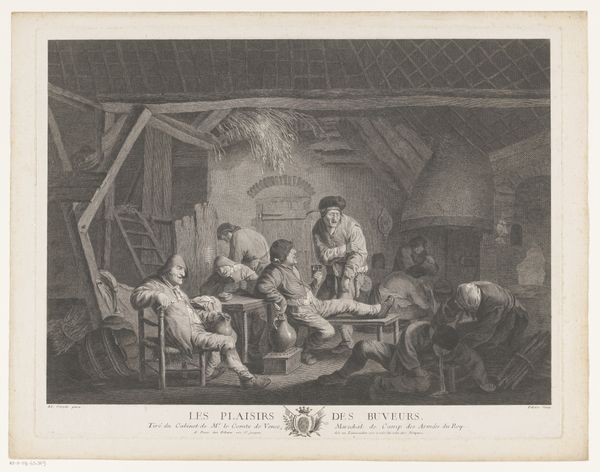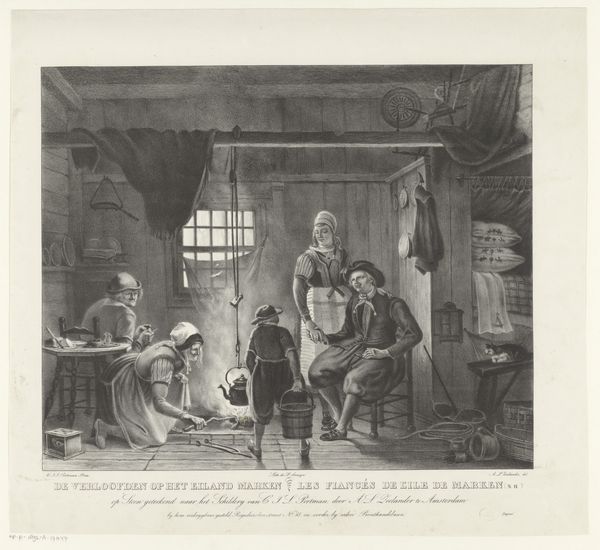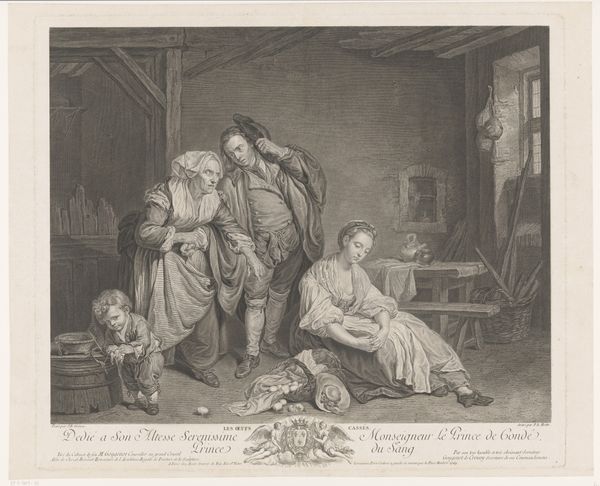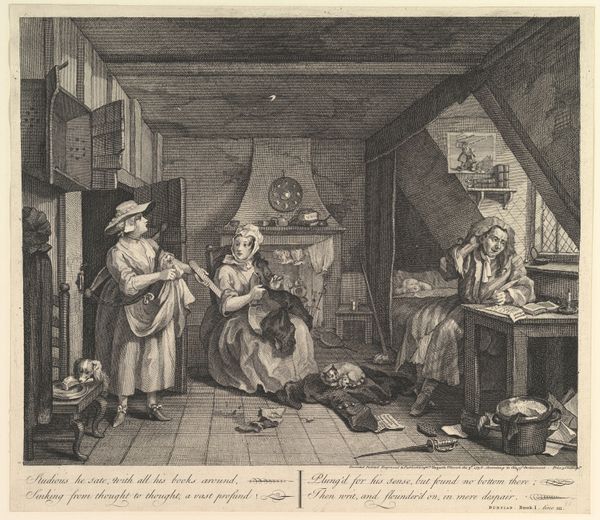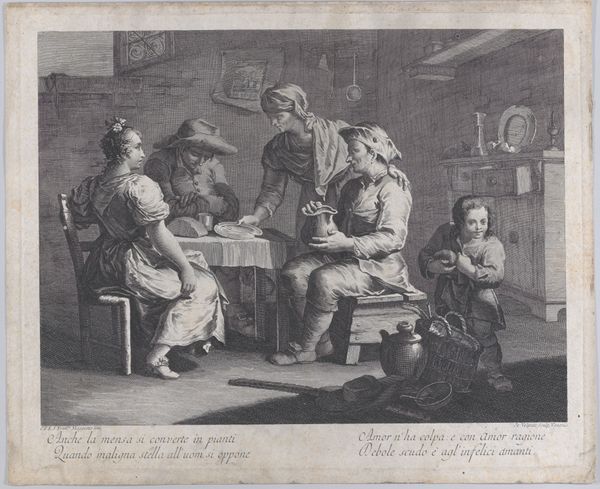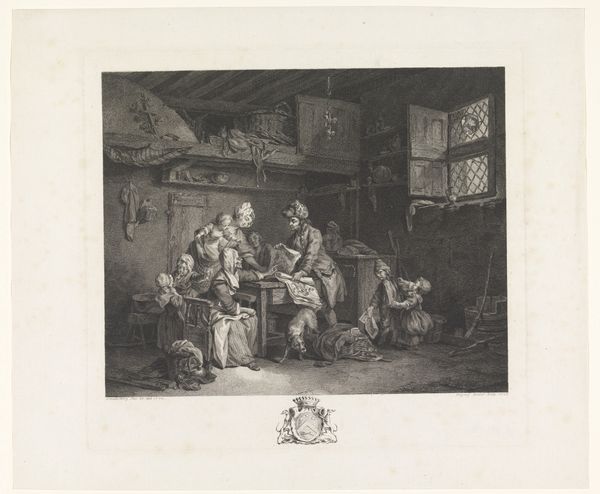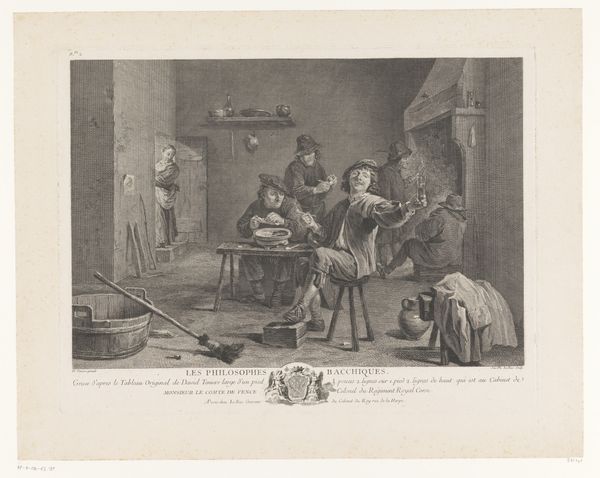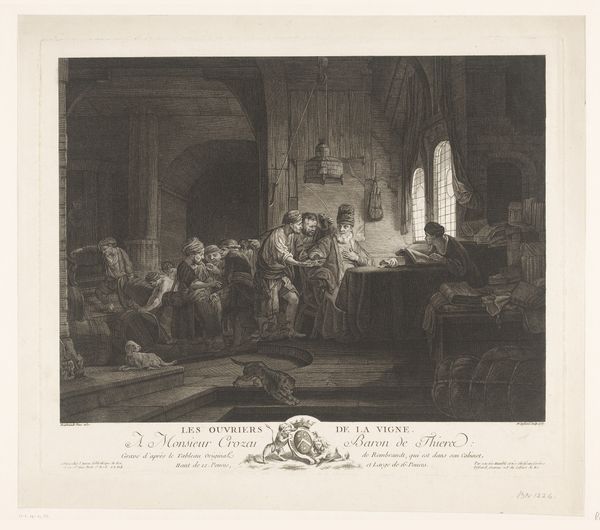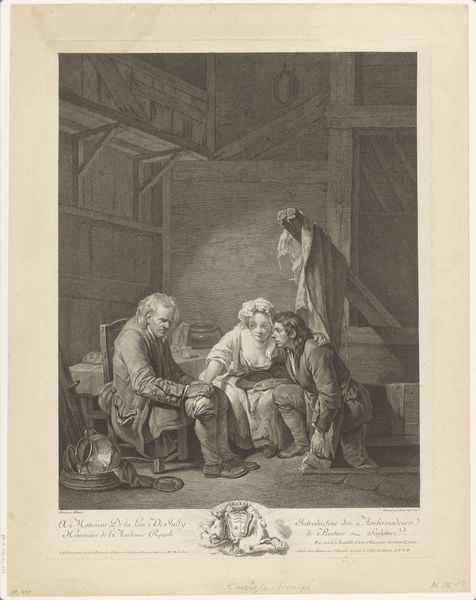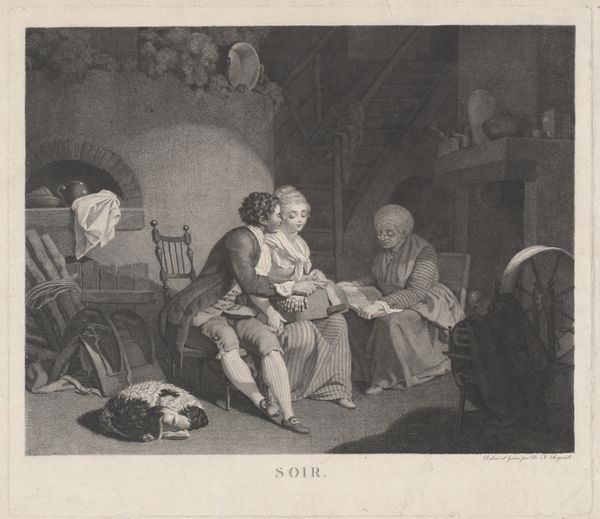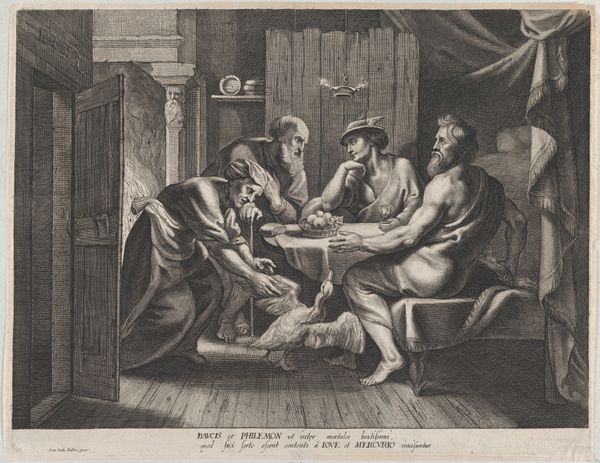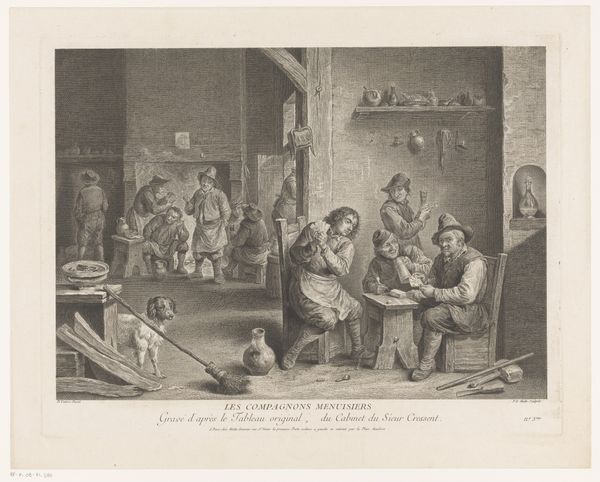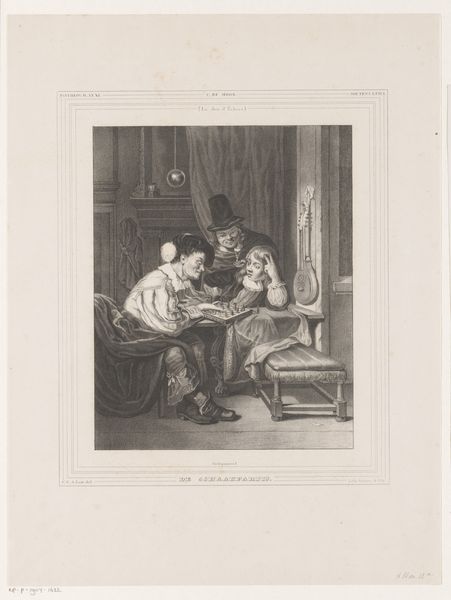
print, engraving
#
baroque
# print
#
landscape
#
genre-painting
#
history-painting
#
engraving
Dimensions: height 436 mm, width 509 mm
Copyright: Rijks Museum: Open Domain
Editor: This is "Boereninterieur met bonenpellers," which translates to "Peasant Interior with Bean Shellers," an engraving from around 1760 after a painting by Teniers. The interior scene, with its dim lighting, evokes a sense of everyday labor and community. What jumps out at you in terms of historical interpretation? Curator: The most striking aspect of this print is the way it elevates a seemingly mundane activity—shelling beans—to a subject worthy of artistic representation. Genre scenes like this became popular as printmaking democratized art and allowed for wider distribution to a growing middle class. Who exactly do you imagine the audience was for an image of working people relaxing indoors together? Editor: I suppose city dwellers who are interested in rural life? Did they consume images like these just as decoration or were there some other motivations? Curator: Certainly some might have consumed this as decoration, but these images also carried significant social and political weight. Remember that the late 18th century was a period of immense social change. Representing peasants in a certain way, sometimes sentimentalizing their existence or portraying them as virtuous in their simplicity, was a way of managing anxieties about class differences and social unrest. Do you see that idyllic tone at play here, even in the subdued light? Editor: I think so. It looks idealized to me, since everything appears neat and the workers relaxed. Like the toil is gentle. Is that just me? Curator: Not at all! Consider the power dynamics inherent in who gets to depict whom, and what purpose that depiction serves. While seemingly innocent, images like this participated in shaping perceptions of different social classes and justifying existing power structures. Editor: That's something I hadn't considered fully. Thank you for clarifying the nuances. It's made me think about the politics embedded in the every-day representations. Curator: Absolutely, and by exploring those connections, we can understand art’s role in shaping our understanding of society, both past and present.
Comments
No comments
Be the first to comment and join the conversation on the ultimate creative platform.
